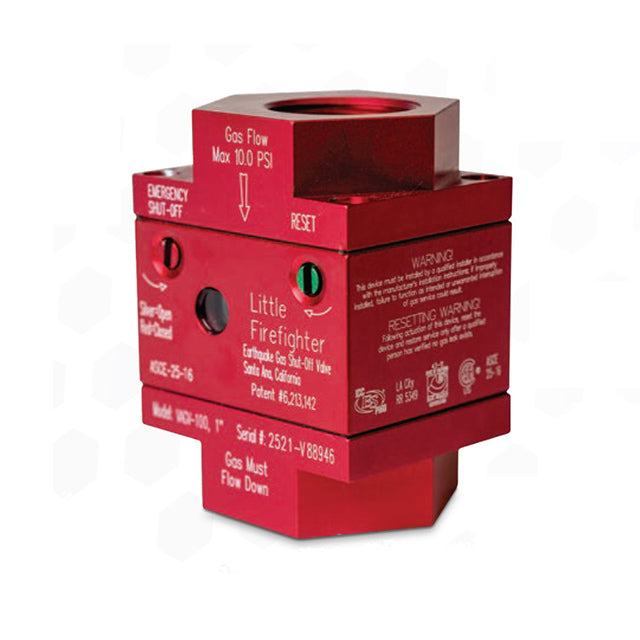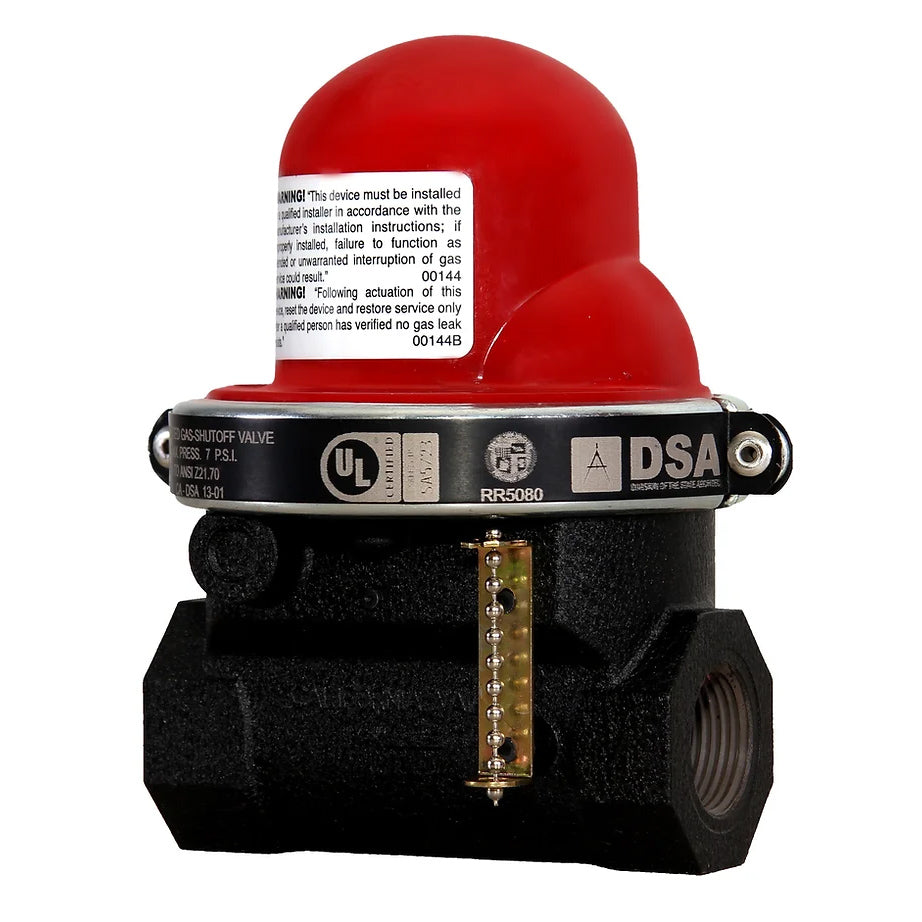How Gas Shut-off Valves Work
What Gas Shut-Off Valves Do
The basic purpose of a gas shut off valve is to cut the flow of gas to your house in the event of an earthquake (or, depending on the type of valve, a potentially dangerous leak due to other causes.) Each device has a simple mechanism inside which activates and blocks the flow of gas. Different manufacturer's have their own unique methods of restricting gas flow but they all operate in essentially the same way.
Seismic Valves vs. Excess Flow Valves: What's the Difference?
Seismic valves are triggered by the ground shaking caused by earthquakes. When shaking reaches the level of the valve's designated shut-off point (generally around 5.2-5.4 on the Richter Scale), the valve will automatically stop the flow of gas into your house. Once you have determined that there is no potential danger from fire or explosion, you must reset the valve manually to restart the flow of gas.
Excess Flow valves are designed to cut off the flow of gas when they detect a higher flow rating than the allotted maximum flow of the home. If you have a line break, the escaping gas will cause excess flow detectable by the valve, which then immediately shuts off the flow of gas into your house. Since they operate on a different principle, excess flow valves will not shut off the gas to your house simply because of an earthquake.
Both types of valves offer effective protection from the threat of fire or explosion from natural gas. Simply choose the right valve for your particular application.
What Kind of Service is Involved?
Because earthquake valves have virtually no moving parts, there are no service requirements. Please refer to the enclosed instructional pamphlet that comes with each valve to learn how easy it is to reset your valve.


